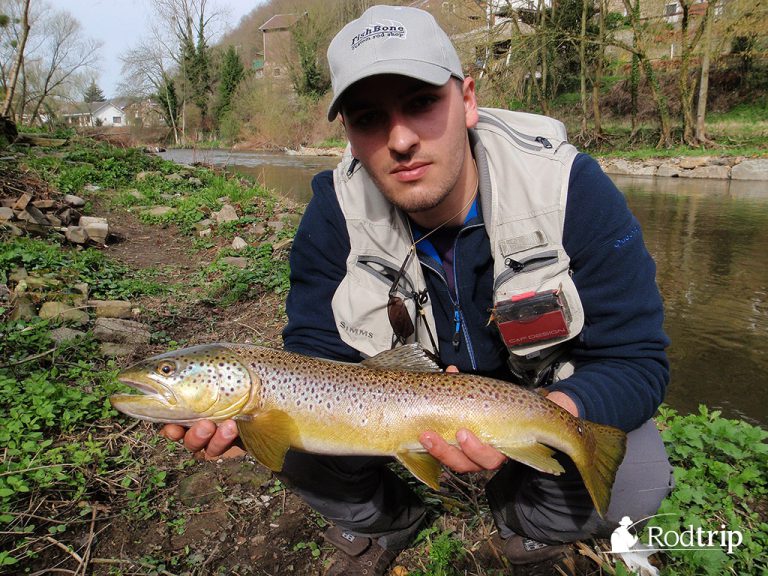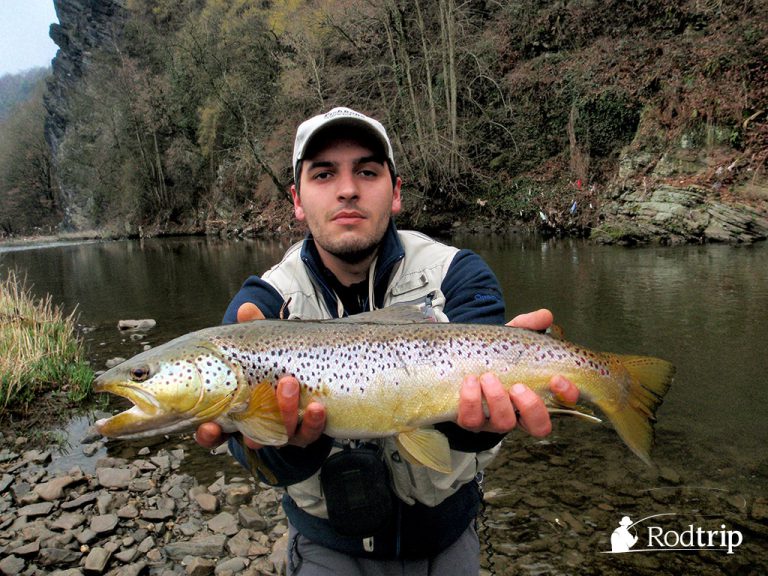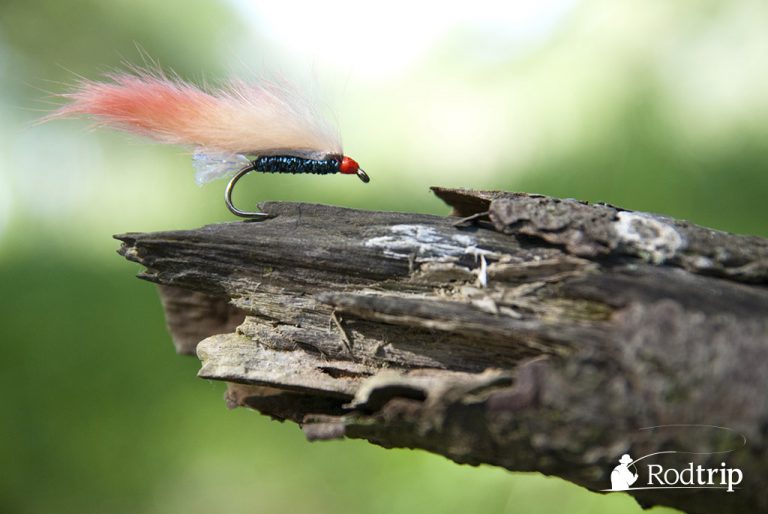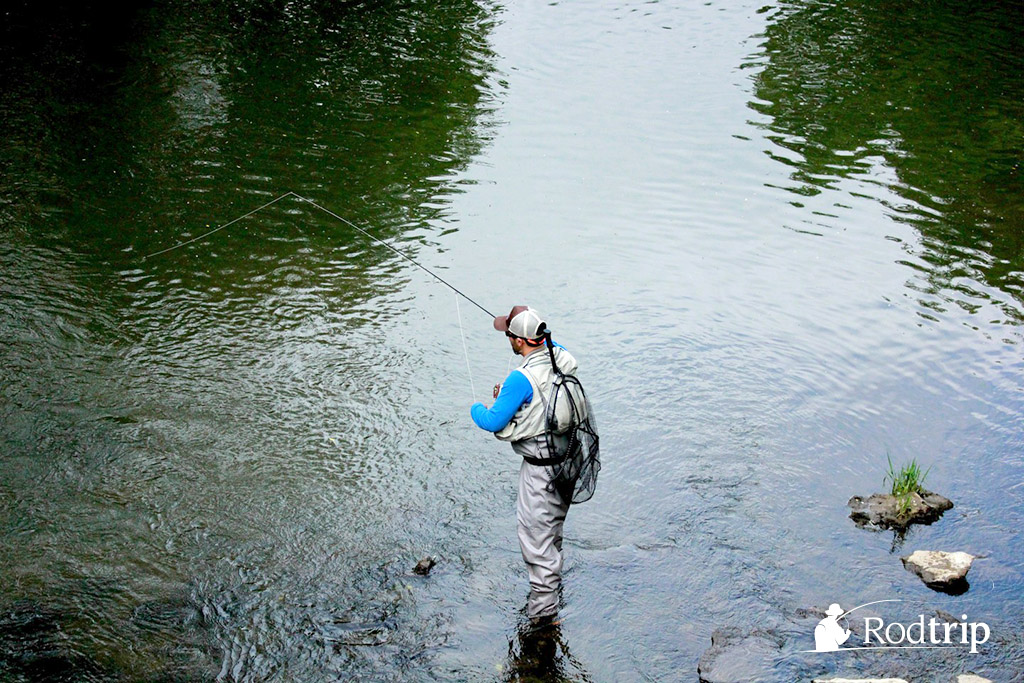If there’s a one size fits all technique to fish large trouts,
it’s the streamer.
Murderous technique really, but frequently badly used. Since I’ve been doing flyfishing, I’ve always employed streamers but it’s only been 2-3 years since I’ve regularly caught nice fishs.
We master a technique only when the fish catching becomes not a question of luck and when we know how and why we caught the fish.
We’ve all heard stories about monstruous trouts which got out of nowhere and snapped up the newbie’s streamer who’s making it’s firsts river weapons. We’ve all caught a fish by leaving our fly linger in the water or by going upstream.
Luck is obviously a part of fishing but for those like me who don’t have, we’ve got to do everything in our power in all fishing conditions to succeed without counting on luck to help us.

I will now talk about wild trouts which suffer of a strong fishing pressure, educated fishs that don’t jump straight on everything.
So forget your flashs and other multicoloured streamers, we’re heading on the trail of large wild trouts !
I will describe the streamer fishing in three main categories : the sight fishing, fishing in the rapids and in the calmer zones.
In regard of the equipment let’s go simple, we’ll content of a 9-10 feet rod with a 6 or 7 feet long floating line. The reel will be garnished with a good backing and supplied of a progressive break able to resist to the more powerful rushes.

The sight fishing
The flies miniaturization and spider thread is very fashionable nowadays. We stop and do it all over again.
In this case, we’ll use small streamers on hook 12-10-8… and 14 or 16 hundredth… We are thus far from all that has been written on sight fishing.
I use this technique, probably because I don’t have the patience to make 40 attempts to get an educated trout. The great advantage of using a streamer is that the fish will immediately react, it will either bite at the first or second attempt or leave.
The large trouts will tend to make a bigger move if we use a well sized fly while they will stay completely amorphous in front of a more classical nymph.

Indeed a big fish needs a big bite.
As that day with Gregg when we were going up a bank. A nice trout showed up, it was Gregg turn to fish and I told him « put a stream ». But he didn’t listenned to me and put a nymph… After an hour of fishing and lots of fly changes he said « go on, I’m tired of it »…
The first attempt was the good one and a 60 centimeters long brown ended up in the scoop. Once more the streamer was the winner.
In regards of the execution of the fishing, it isn’t really complicated. Everything is in the approach and discretion of the landing. If the trout isn’t alerted you will have great chance to catch it.
You just need to land about 2 meters upstream of the fish to make sure it’s not alerted by the noise of the streamer touching water. Your leader must be at least two times longer than the rod.
But the fishing technique in itself is exactely the same as the sight fishing, with a close difference : you musn’t hesitate to animate your fly. The animation must stay minimal : no long pull or strong strip, a shake of the rod will be enough.

About the streamers : they must be sober so opt for dark shades. Grey, brown, black with a few flash fibers and a touch of orange according to the season. We’ll use water living material : rabbit, marabout, peahen… And even CDC. Everything is conceivable, you just need to think sober and mobile !
The fly mustn’t be too ballasted, a brass or tungsten marble often works but it depends of the rapidity of the stream and the depth at which the fish is.
Personally I always use the same, but I will keep this one for myself, there are enough models and different materials for everyone to craft its own streamer that will catch the specific trout you want.
I will still give you a piece of advice… « peahen »

Fishing in the rapids
This is where the streamer fishing is all about, where the attacks are the most violents.
For instance, I’ve already broke my fly line in the attack of a big rainbow trout. The line was stucked in my reel and the coating has been ripped of on 10 centimeters.
There are two ways to approach a rapid, fishing upstream or downstream.

The upstream fishing (my favourite) consists in presenting your streamer as a nymph. The goal is to imitate a little sick/wounded/ dead fish that follows the stream. Here you won’t take big strip either.
You should have noticed I’m against fast animations in rivers.
The streamer must imitate a weak and easy to catch prey. If it goes too fast or get too high, the trouts won’t move probably thinking the fish is in good health and is able to flee.
Once again there is no need to over-ballast the fly. The size and the material employed will make it sink with no help.
The attacks are strong because the fishes violently grab the fly, which greatly facilitate the strike spotting.
A leader of one and a half the size of the rod seems correct, for those who want to make it longer, no one will blame you.
It’s a fishing where you need to feel your streamer living, see how it evolves underwater. We can animate our fly but we really mustn’t lose contact, risking to miss a beautiful fish.

The downstream fishing (the one everyone do). Very used fishing but… how to say… very badly used.
It is true that it’s the simplest, no need to be a good fisher to leave a streamer swimming in the stream and catch a few little fishs. But there’s the problem, it’s so easy that we don’t try to improve our fishing technique while we’re missing the largest fishs, the one stalled in the bottom and that obviously won’t go for a fly moving at high speed on surface.
I personally use a floating line and a super sinking polyleader to fish as close as possible to the bottom. I throw my fly toward the rapids and do mendings to slowly pull back the streamer in the current.
It allows to go as near as possible to the bottom. I fish precisely ¾ downstream.

Everything is possible with the streamers but keep in ming that your streamer must dive quickly and stay at the bottom, so use heavy or even very heavy material.
The animation is created with short pulls sometimes quick, sometimes slow. The attacks are generally really violent and so are the sensations. It’s generally not necessary to strike, the trouts do it on their own.
Just a little pull on the rod can lead to a break and the lost of a nice fish. I would advice you to stay the rod low a few seconds before raising it.
The line will be of one time the rod length. I personally use 28 hundredth because we never know what we can encounter.
Fishing upstream or down stream, there are a few place not to neglect. The start and the end of the current are good spots for large fishs so are the holes limits where the bottom of the river rise up a little.
Fishing in the slow current
I really don’t like it, I feel like fishing in a pond… But as the calm zones of the river make a great part of the trouts environnement, we can’t always afford to pass by them.
Here you have to be very discreet and make sure the waves you create don’t go upstream because if so you can already change of spot; all the trouts will know you’re there.

Upstream or downstream fishing ? Here everything works… according to the depth we’ll use a floating line and a slow or faster sinking leader.
You must fish everywhere without insisting : if the fishes are actives, they will directly react.
There’s no need to stay 30 minutes at the same spot, you’ll just fear away the fishes. If you are sure that a large trouts is at a precise spot, it’s better to come back a little later than insisting much.
Fishing in the middle of the river is no use, you must focus on the obstacles, banks and cluttered spots, in the way of a fisher of carnivores.
The leader will be one and a half the size of the rod and a 22 tippet seems correct. You don’t have to go under that because the attack can be explosive and so break a smaller diameter.
I will conclude by saying that you must never take a fishing article as a uncontestable guide, it’s the result of observations made in a specific place with a specific type of trout.
Everyone must make his own opinion by going as much as possible at the river and build up his fishing experience.
Have fun !

